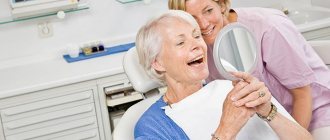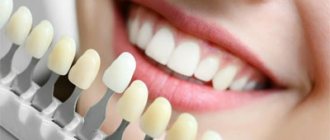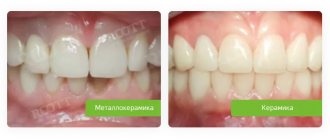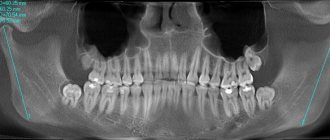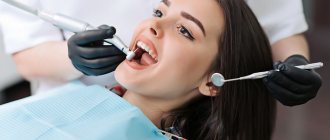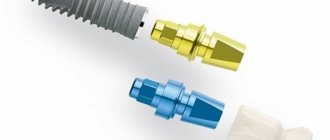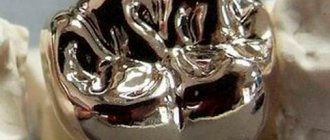For professional dental care, various methods and tools are used, among which one of the main places is grinding the enamel with subsequent polishing. The technique is used independently or simultaneously with other manipulations, for example, after removing large stone deposits. Often the method is used during preparation for other processes, for example, prosthetics or restoration with veneers.
Grinding is performed for primary processing, removal of irregularities and roughness, microcracks. At this stage, stone and soft plaque are eliminated, and caries is prevented. Polishing is carried out after grinding. They completely smooth out enamel unevenness and eliminate minor imperfections. Additionally, this step has a mild whitening effect by removing deposits. But there is a slight increase in color, as the natural shade is restored. If the purpose of the procedure is serious whitening, then the doctor uses other methods and drugs.
Tools and procedure features
There are four types of procedures, including grinding and polishing of enamel:
- traditional mechanical;
- ultrasonic;
- air;
- laser (one of the safest).
The traditional method is used when there is a large volume of deposits. To do this, the dentist uses different types of handpieces and a drill. Under the influence of an abrasive coating, deposits are removed, exposing the enamel and restoring the color of the teeth. The cost of the procedure is affordable, but the patient may feel discomfort during cleaning. Therefore, such manipulations are not recommended for people whose tissue sensitivity is increased. If other methods fail to remove stones, local anesthesia may be used.
The ultrasound method is painless and effective. The procedure is performed using a special apparatus and replaceable tips. Ultrasonic exposure allows you to work with hard-to-reach areas and remove plaque from the subgingival area. The patient does not feel discomfort or pain, the procedure is carried out quickly.
The air method is one of the most common. The surface is treated with a strong air flow under pressure using an abrasive mixture. Little time is spent on work, the process does not cause pain or discomfort. A slight lightening effect is achieved.
Laser enamel resurfacing is an expensive procedure. To perform the manipulations, special equipment is used, with which you can remove complex plaque from all areas of the row. The enamel whitens and deposits accumulate much more slowly.
When performing work, a dentist uses special tools. With laser and ultrasound methods, additional funds are not needed; the equipment used, already equipped with everything necessary, including attachments, is sufficient.
The air method uses abrasive powders with grains of different fractions. To remove stone and large volumes of plaque, compositions with large particles are selected. For final polishing - fine powders. There are also tips and processing pastes. On flat areas, rubber cup-shaped nozzles are used, for hillocks - with a cone-shaped nozzle. Hard-to-reach places are cleaned using pins and strips. When choosing pastes, you need to pay attention to the color, which indicates the graininess. Yellow pastes are intended for soft finishing polishing, blue pastes are rough, used for initial removal of deposits. If necessary, intermediate compositions of green and red colors are used.
Intraoral air abrasive treatment: methods, devices, application possibilities
According to the Glossary of Terms in Prosthetic Dentistry, air abrasion is the process of treating the surface of a material through the use of abrasive particles driven by pressure from air or other gases. The second name for this method is sandblasting. In dental laboratories, sandblasting machines are used to clean materials and residues from the milling process, increase the roughness of the internal surface of crowns, and for a number of other practical purposes. In a clinical setting, air abrasion is provided by the simultaneous supply of abrasive particles and a water jet, which allows you to control their direction. Based on clinical need, there are several types of abrasive particles that differ slightly in their effect.
In this article, we will describe the instruments available on the market for performing air abrasive treatment, review the evidence regarding the feasibility of this procedure, and also analyze clinical protocols for using the method in dental practice. Air abrasive treatment, among other things, is also a tool for professional oral hygiene, however, in this article we will look at the specific capabilities of this method in orthopedic dentistry.
Devices for air-abrasive processing
At the moment, there are several devices available on the market for air abrasive processing that do not require the additional use of a water jet. These devices include MicroEtcher IIA (Danville Materials/Zest Dental Solutions) and EtchMaster (Groman Dental). These systems are effective for roughening and cleaning, although they also have a high level of contamination of both doctor's and patient's clothing during use. To minimize this effect, it is best to use devices with an additional water flow. Representatives of these are PrepStart H2O (Danville Materials / Zest Dental Solutions), AquaCare (Velopex), RONDOflex plus 360 (KaVo Kerr), Bioclear Blaster (Bioclear).
The effectiveness of such devices depends on the particle mixing mechanism, air pressure, and the level of particle and water flux density. For example, in some devices the mixing of particles occurs due to the formation of a vortex chamber inside the apparatus, while others provide mixing due to the vibration effect. In addition, some air abrasive systems are completely self-contained, while others can be connected to a dental unit. During the analysis of the literature, the authors of this article were unable to find publications concerning the comparison of the effectiveness of air abrasion procedures that did and did not provide for the additional use of water flow. It should be understood that the main purpose of the water flow is only to control the level of particle distribution.
Standalone devices
The advantage of a self-contained device is its pronounced functional flexibility and the ability to adjust parameters such as air pressure, particle flow rate and water flow rate. Two widely used models of these devices, PrepStart H2O and AquaCare, contain a reservoir for storing abrasive particles and liquid, and require only an air flow to operate. Both of these devices are activated by pressing a foot pedal. These devices differ only in that the design of the first assumes the presence of only one reservoir, which can be filled with different types of abrasive particles, while the design of the second is characterized by the presence of several such reservoirs, which can simultaneously contain several types of abrasive substances. In terms of infection control, these devices have removable tips that can be sterilized in an autoclave. PrepStart H2O uses a water reservoir that is filled by the user, so the hoses must be rinsed with a disinfectant solution at the end of each day. The water supply in the AquaCare device is carried out in parallel with a special liquid containing ethanol, therefore, the hoses are disinfected directly during operation.
Devices connected to the dental unit
Devices that connect to the dental unit have the advantage that they require less space in the dental office and do not impede the clinician's movement during a clinical appointment. Examples of such devices are RONDOflex plus 360 and Bioclear Blaster. These devices are equipped with reservoirs for filling them with abrasive particles, and air and water flows come from the dental unit. Also, these devices have removable tips that can be autoclaved, or they are autoclavable in their entire configuration.
Abrasive particles
To carry out the air abrasive treatment procedure, you can use several types of abrasive particles, which differ in their level of abrasiveness. Aluminum oxide is the most common agent used for these purposes, but other particles with a slightly lower level of abrasiveness can also be used, with which, for example, you can remove biofilm on the surface of a tooth.
Aluminium oxide
Aluminum oxide is a ceramic particle that is the most abrasive agent used in intraoral air abrasion procedures. These particles are characterized by an irregular shape with the presence of uneven edges, which ensures their abrasiveness. The density of aluminum oxide is 3.95 g/cm2. The average diameter of these varies from 30 microns to 90 microns, with larger particles being more abrasive. This type of abrasive agent is used to prepare the tooth, reduce hard tissue, and remove unwanted contaminants. In addition, aluminum oxide particles can achieve rougher surface finishes on certain dental materials such as metals, ceramics and composites.
Glass
Various glass particle shapes have also been extensively studied for their potential use in air abrasive machining processes. Glass particles are characterized by a spherical shape and lower density compared to aluminum oxide particles. The average particle size ranges from 50 µm to 90 µm. Considering the lower level of abrasiveness of glass particles, they are completely safe for tooth enamel and dentin. Therefore, these particles are more often used for surface cleaning purposes in which the level of surface damage should be minimized, for example, to remove excess cement or plaque. In addition, glass particles can also be used to clean metal tools. Bioactive glass particles have also been studied for their antibacterial properties and remineralization potential. In addition, these agents are used to obstruct dentinal tubules to minimize existing hypersensitivity symptoms.
Particles for cleaning
There are several types of abrasives intended solely for hygienic cleaning purposes, such as sodium bicarbonate, glycine, sodium calcium phosphosilicate, calcium carbonate and aluminum trihydroxide. Laboratory studies have demonstrated that the abrasiveness of all of these particles, with the exception of glycine, is high enough to modify the surface of a polymerized composite or glass ionomer. But despite this, these particles are ideal for removing plaque before starting restoration.
Evidence of the effect of air abrasion on bonding bonding
Data on the effect of air abrasive treatment on the strength of the bonding bond with enamel and dentin are very contradictory. This effect may be caused by the fact that the results of the tests performed depend on the type of adhesive used and the protocols for its application.
Previous studies
Studies examining the shear strength of bonding bonds during air abrasive machining provide partially conflicting results. Thus, Mujdeci and Goka reported that air abrasion (with 25 µm alumina particles at 120 psi) increased bond strength to enamel and dentin in total etch protocols. Souza-Zaroni et al reported a similar effect of alumina particles (27.5 µm at 60 psi) on enamel bond strength using self-etch bonding systems, but a similar result was not reported in adhesive assays requiring carrying out preliminary etching and washing off the etching agent.
On the other hand, Nikaido et al found that air abrasive blasting (at 41.8 psi) with 50 µm diameter glass beads significantly reduced the adhesive bond strength to enamel and dentin (using systems implying a preliminary etching stage), and aluminum oxide particles with a pore diameter of 50 microns reduce the strength of the bonding bond with the enamel, without affecting the strength of the connection with dentin. The results of scanning electron microscopy suggest a potential weakening of the tooth structure after air abrasive treatment, which may consequently reduce the strength of the adhesive bond. Roeder et al reported that when air abrasion (120 psi aluminum oxide) was used instead of a phosphoric acid etchant, the level of bonding force to enamel and dentin was significantly reduced. Some studies indicate the absence of any effect on the bond strength between the composite and tooth structures after air abrasion. Thus, Los and Barkmeier found no effect on the bond of self-etching bond to dentin when pretreating the tooth surface with 50 µm aluminum oxide particles at 60 psi. inch or hydroxyapatite particles ranging in size from 20 to 40 microns. Similar results were also noted by Roeder et al regarding 27- and 50-μm alumina particles at 120 psi. inch.
Laboratory research
During the preparation of this review, a laboratory study was also conducted to study the effect of air abrasion on the bonding strength of enamel (pre-etched) and dentin (pre-etched and self-etched systems). After institutional approval was obtained, the extracted teeth were segmented to form flat enamel (n = 20) and dentin (n = 40) surfaces, which were then polished with silicone tips. Half of the test specimens (enamel n = 10, dentin n = 20) were treated with PrepStart H2O for 10 seconds with 50 µm alumina particles (Danville Materials/Zest Dental Solutions) at 60 psi and then they were washed. All enamel samples (n = 20) were etched with 37% phosphoric acid (Scotchbond Universal Etchant, 3M Oral Care) for 30 seconds. Some dentin samples were also etched (n = 20) with 37% phosphoric acid for 15 seconds before applying the adhesive, and some (n = 20) were treated with a self-etching bond without prior etching. All samples etched with orthophosphoric acid were washed for 10 seconds under running air and water.
All samples were coated with the same adhesive (Prelude One, Danville Materials / Zest Dental Solutions), which was then cured with a lamp (Elipar S10, 3M) with an output power of > 800 mW/cm2. A 2.35 mm diameter cylindrical composite sample (Prestige, Danville Materials/Zest Dental Solutions) was applied to the machined surfaces of the samples and cured for 20 seconds. Specimens were kept moist at 37°C for 24 hours and then thermally cycled (5ºC and 55ºC, 15 second dwell time, 10,000 cycles) after which they were subjected to shear loading to bond failure using a specially designed universal testing apparatus (Instron 5565, Instron ). Finally, the samples were examined using scanning electron microscopy (SEM). The T-test revealed no difference in bond strength between enamel air abrasion and non-air abrasion treatments (P = 0.437), and one-way ANOVA confirmed similar results for dentin (P = 0.515). Thus, when processing enamel, the bond strength was 28.4 ± 6.7 MPa, and without it - 30.4 ± 4.5 MPa. As for dentin, in cases of etching and abrasive treatment, the strength of the adhesive connection reached 27.3 ± 5.2 MPa, and without it - 24.9 ± 9.8 MPa, and in cases of using a self-etching agent with air abrasion - 22. 8±7.2 MPa, and without it - 28.9±3.6 MPa. SEM results showed that the structure of dentin enamel becomes rougher after air abrasion treatment, and the texture remains specific even after etching with phosphoric acid (photos 1-10). But despite the higher roughness, it had virtually no effect on the value of the adhesive bond, determined by the shear force parameter. One can only assume that adhesion in cases of using self-etching bonds becomes only slightly stronger, which was also found in studies by de Souza-Zaroni and colleagues.
Photo 1. View of the enamel sample before etching and air abrasive treatment.
Photo 2. View of an enamel sample after air abrasive treatment before etching.
Photo 3. View of the enamel sample after etching without air abrasive treatment.
Photo 4. View of the enamel sample after etching and air abrasive treatment.
Photo 5. View of the enamel sample after etching and air abrasive treatment at a higher magnification.
Photo 6. View of a dentin sample before etching and air abrasive treatment.
Photo 7. View of a dentin sample before etching and air abrasive treatment.
Photo 8. View of a dentin sample after etching without air abrasive treatment.
Photo 9. View of a dentin sample after etching and air abrasive treatment.
Photo 10. View of a dentin sample after etching and air abrasive treatment at higher magnification.
Clinical Applications
Cavity preparation
The clinical benefits of cavity preparation by air abrasion are that it provides a more conservative approach to hard tissue reduction. Several studies have examined the ability of abrasive particles to selectively remove carious dentin without affecting healthy tooth tissue, but this has proven to be nonspecific. One study even reported that aluminum oxide particles removed healthy dentin and enamel tissue to a greater extent than caries-affected tissue. Of course, the air-abrasive preparation method takes longer than preparation using boron, but the effectiveness of this process is influenced by a number of parameters. First, the "cutting" power of air abrasion is dependent on air pressure: the current recommended pressure level for preparation is 100 psi. Particle flow rate can also affect preparation efficiency, but must be adjusted based on air pressure. If the particle flow rate increases without sufficient air pressure, the volume of particles will not move enough and the additional particles will only cause more dust volume. Ensuring that there is a sufficient amount of abrasive particles in the device's accumulator before and during preparation is also extremely important as this directly affects the particle flow rate. Finally, the angle at which the working part of the nozzle is directed relative to the surface of the tooth, and the distance to the tooth, also determine the effectiveness of the preparation. Positioning the nozzle at an angle of 60 degrees to the surface allows for effective V-shaped tissue reduction at a distance to the tooth of up to 5 mm. But one of the main advantages of air abrasive preparation is patient comfort, especially in cases where anesthesia was not used.
Cleaning after preparation
Air abrasive blasting can also be used to further clean teeth after preparation and before adhesive application. This approach allows you to remove the remains of previous fillings, discoloration and temporary cement (photo 11-14). In addition, the abrasive particles allow the internal surfaces of the stump to be smoothed, resulting in better adaptation of the material used for restoration (photo 15-16). Considering that the adhesion phenomenon is extremely sensitive to surface cleanliness, it can be assumed that from this point of view, air abrasion still accompanies the achievement of more effective results of dental treatment.
Photo 11. Air abrasive treatment of enamel.
Photo 12. View of the enamel surface after air-abrasive treatment before etching.
Photo 13. View before air abrasive treatment.
Photo 14. View after air abrasive treatment.
Photo 15. View of cavities before air abrasive treatment.
Photo 16. View of cavities after air abrasive treatment.
Biofilm removal
Aluminum trihydroxide air abrasive can be used to remove plaque, minor tartar, overhanging enamel margins, defective restorations and linings, and for specific soft tissue retraction. Removing biofilm also improves bond strength and minimizes the subsequent effect of microleakage. Given the difficulties with visualizing biofilm, it is recommended to use different dyes to identify it, which should be applied several times (photo 17-19). Considering that abrasive particles, with the exception of glycine and sodium bicarbonate, can alter the enamel surface, re-application of coloring agents after air abrasion should be avoided, as they can cause discoloration.
Photo 17. Visualization of plaque using dye.
Photo 18. Air abrasion with aluminum trihydroxide to remove biofilm.
Photo 19. View after air abrasive treatment.
Summary
Air abrasive treatment is one of the methods of tooth preparation, as well as an additional method for increasing the predictability of the functioning of composite restorations. Although there is conflicting evidence for improved bonding following air abrasion, this method at least allows for cleanup of the tooth surface after preparation and also avoids the need for anesthesia in some cases. When using the capabilities of air abrasion, the parameters of the device used should be optimized to achieve the required results of the intervention.
Authors: Chan-Te Huang, DDS Jihyon Kim, DDS Celin Arce, DDS, MS Nathaniel C. Lawson, DMD, PhD
Indications and contraindications
The procedure for grinding and subsequent polishing of the enamel surface is indicated in the following cases:
- presence of hard and soft deposits;
- condition after filling;
- as a preventive measure when wearing braces;
- before prosthetics to exclude complications, the development of caries, soft tissue diseases;
- for regular care, restoration of the natural shade of enamel, improving the aesthetics of the range.
Contraindications to the procedure include:
- state of deep caries damage, multiple defects requiring preliminary treatment;
- inflammation of the gums, bleeding, other soft tissue diseases;
- increased enamel sensitivity;
- inflammatory processes in the acute stage;
- The Patient has an individual intolerance to the abrasive pastes used.
Most contraindications are relative. They must be eliminated, after which you can polish, restoring the natural color. But only a doctor can make a decision about the possibility of such manipulations after a visual examination and some diagnostic measures, if the need arises.
Abrasive materials for grinding are divided into:
a) natural (diamond, corundum, emery, quartz, minute stone, pumice, etc.);
b) artificial (electrocorundum, carborundum/silicon carbide/, boron carbide, tungsten carbide).
As a finishing material, abrasives used for grinding must meet certain requirements:
— the hardness of the materials used must be no lower than the hardness of the material being ground; the grinding tool becomes “greasy” if its hardness is too high for processing a given material, or wears out prematurely if this hardness is low;
— the shape of the abrasive grains must be multifaceted to provide a cutting edge;
— materials must be easy to use; have the ability to stick together (fasten) and be well retained in the binder.
The hardest mineral is diamond, which is a crystalline form of carbon. In the form of dust glued to metal discs and circles, it is used to prepare teeth before covering them with crowns.
When processing ceramics, the most valuable qualities in a diamond blade for a dental technician are flexibility, thinness and efficient cutting.
Such a tool is necessary to create aesthetically thin spaces between the front artificial teeth. According to the Renfert company (Germany), the Turbo Flex tool allows you to get the desired result. The V-shaped notch in the disk plays a significant role in this. The latter has a thickness of 0.15 mm, coated on both sides with diamond chips. Even with light pressure, effective cutting of ceramics is achieved.
The polishing gel has an extremely high concentration of micron-sized diamond particles, which reduces polishing time to two minutes. The gel is applied using a felt applicator, which does not increase the temperature and provides easy access to any tooth surface.
Corundum - ranks second in hardness; it is a crystalline form of aluminum oxide (Al 2O3). In its pure form (ruby, sapphire) it is rarely found, more often with various kinds of impurities (iron and silicon compounds). In this form, it is an opaque crystal of bluish-gray, dirty yellow or gray-brown color, having very high hardness and containing up to 90% or more alumina.
Corundum is also made artificially from the mineral bauxite, which contains alumina not in crystalline, but in amorphous form. To obtain crystalline alumina (corundum), bauxite is smelted in a mixture with coke. The hardness of artificial corundum increases with increasing aluminum oxide content. Extra-hard, highest grades of corundum are used for grinding durable steels.
Emery is a grinding material extracted from rock. It contains corundum, iron oxide compounds and other materials. The hardness of emery is close to the hardness of corundum. Emery powder is used for grinding and making emery cloth and sandpaper. Grinding properties depend on the percentage of corundum. Sandpaper and discs are used for grinding dentures and fillings.
Carborundum is produced artificially, for which a mixture consisting of coke, pure quartz sand, sawdust and table salt is melted in an electric furnace. It consists of silicon carbide crystals. Carborundum grains are distinguished by their sharp edges and high hardness. A significant disadvantage of carborundum is its significant fragility. Its grains crack easily under load. Carborundum is mainly used in the form of grinding wheels and discs.
Pumice is a rock formed during volcanic eruptions and has a porous structure. The edges of the pores are very sharp. The color of pumice varies depending on the content of iron oxides: from white and blue to yellow, red and even black.
Binding materials are used to make abrasive tools. Their purpose is to bind (cement) abrasive grains after they have been crushed and sifted through sieves with a certain number of holes.
Doctor's recommendations
After completing the procedure, you must follow the dentist's advice:
- correction of the diet for the first time, refusal of coffee or tea, coloring foods or fruits that contain active acids;
- inclusion of medium-temperature dishes in the menu, which will protect against soreness and discomfort in the first couple of days;
- Limit alcohol intake and smoking.
You should also constantly pay attention to personal hygiene. This is cleaning using special brushes and pastes, using irrigators and rinses. Preventive appointments at least once every six months will help monitor the condition of the oral cavity, identify problems in a timely manner and begin treatment if necessary.
Binding materials are divided into:
- ceramic;
— bakelite;
- volcanic.
Ceramic binders are based on a mixture of clay with feldspar, talc and other substances such as quartz. This bond is fireproof and has high mechanical strength.
Used for the manufacture of various types of grinding wheels.
The disadvantages of products on this basis are fragility and high sensitivity to shock. Therefore, products based on ceramic binder material are used in installations with low speeds. The advantages of such a bond are moisture resistance and uniform hardness.
Bakelite binding materials are prepared on the basis of bakelite, less often - rubber and various adhesive compositions.
Bakelite is an artificial resin formed by the interaction of phenols or cresols with formaldehyde. After filling with abrasive and hot pressing, a fairly durable tool is obtained.
It has found wide application in denture technology. Wheels or other forms of abrasives on this basis are distinguished by their elasticity, impact resistance, and smooth surface. This type of binder is also used for the manufacture of sandpaper or glass paper and emery cloth.
The disadvantage of this bond is the lower adhesion strength to abrasive grains compared to ceramic materials.
Vulcanite binders are based on the use of a mixture of rubber and sulfur, which, after the introduction of abrasive powder, undergoes vulcanization. These ligaments have even greater elasticity and density than bakelite ones, but are distinguished by elasticity.
Vulcanite bonded wheels are indispensable for grinding, when the wheel requires not only grinding, but also polishing action. The latter is explained by the softening of the ligament at a temperature of about 150 ° C and the squeezing of abrasive grains into this softened ligament.
Abrasive tools based on bakelite and vulcanite bonds are very durable and give good results.
Sanding materials
Some grinding materials (pumice, emery) are used in the form of an aqueous suspension, which is applied to the surface to be treated using brushes, felt wheels (cones) and other devices.
The grinding process and the quality of the machined surface depend on many factors. The main ones are:
— abrasive quality and compliance with grinding technology;
— choice of grain size (grain size);
— speed of movement of the abrasive;
— the magnitude of the abrasive pressure on the surface;
— taking into account thermal phenomena during grinding, etc.
The grains for grinding are sorted by size using fractional sifting.
Based on grain size, abrasive materials are usually divided into 3 groups:
- grinding;
- grinding powders;
- micropowders.
The speed of movement of the abrasive during the grinding process is also of great importance. The slower the abrasive moves, the more chips the abrasive grain removes and, therefore, the greater the destructive force the abrasive grain experiences. When moving quickly along the surface of the workpiece, the abrasive removes fewer chips and therefore experiences less resistance, and therefore wears less.
At the same speed, coarser abrasive particles remove more material from the workpiece, leaving deeper tracks. The optimal abrasive speed while maintaining its effective abrasive ability depends on the type of abrasive material. For most of them, the optimal speed is 25-30 m/s.
The use of abrasives inherently involves applying pressure to the surface. The applied pressure should be moderate to avoid breaking the prosthesis or instrument. In addition, excessive pressure leads to heating of the tool and the surface of the object being ground.
The reason heat is generated during grinding is the friction of the abrasive grains against the surface. Since the abrasive wheel (or other form) is not thermally conductive, and the thickness of the layer being removed is very small, the resulting heat is transferred to the mass of the product.
High temperatures, although their impact is short-lived, can lead to changes in the structure of the metal (alloy) or deformation of plastics. All this leads to a decrease in the strength and wear resistance of the sanded product.
The overheating effect is especially dangerous when finishing a plate prosthesis (device). Overheating is necessary and can be avoided by observing the correct grinding mode. This applies even more to tooth preparation. Neglect of this rule leads to burns of the pulp and its death.
After polymerization, removal from the cuvette and separation of the plaster, the prosthesis must be finished. Finishing is done manually using burrs and scrapers of various shapes, files, metal carborundum cutters using a drill or grinding motor.
Processing of the prosthesis begins with removing excess plastic formed due to the burr on the edge of the base, along the line of connection of the cuvette parts. The edges are rounded using grinding stones and carborundum heads. After this, the base of the prosthesis is brought to the required thickness. The treatment is carried out by constantly moving the prosthesis in the hands so that the treated surface is smooth. The fingers should be above the area being treated. Imprints of natural teeth are preserved by removing excess plastic with metal cutters.
Using burrs and scrapers, irregularities are removed at the necks of teeth and between teeth. As a result of treatment, the surface facing the tongue, mucous membranes of the cheeks and lips should be smooth, not wavy. There should be no rough scratches on it. The prosthesis must have the same thickness. The distal edge of the upper prosthesis is gradually thinned so that the patient feels less of the transition from the base to the mucous membrane, so that the food bolus passes more easily. The side facing the mucous membrane of the prosthetic bed, freeing from plaster and plastic deposits that appeared during pressing. Any other treatment of this surface is not performed and is not permitted. Then they move on to grinding, and then to polishing.
Polishing agents
Polishing - processing of products to obtain a smooth mirror surface is carried out using different methods:
— mechanical (processing with an abrasive tool, plastic deformation of the surface);
— electrochemical, etc.
Polishing involves removing a minimum layer of material, for which the instruments are coated with special pastes. These pastes contain abrasive and binding materials. The polishing process is preceded by thorough grinding. When polishing, tools are used that are similar to those used for grinding, but with a different, finer structure.
Polishing abrasives used in denture technology include iron oxide (Fe2O3), chromium oxide (Cr2O3), as well as gypsum and chalk (CaCO3). Iron oxide (crocus) is obtained by reacting oxalic acid with a concentrated solution of ferrous sulfate. It is a fine brown-red powder.
Chromium oxide is obtained by calcining a mixture of potassium dichromate and sulfur. After careful processing, a dark green precipitate is deposited, the crystals of which are much harder than crocus crystals. Crystals of these oxides serve as abrasives in the manufacture of polishing pastes. The binding materials of these pastes are stearin, paraffin, petroleum jelly and other similar substances.
Currently, special pastes proposed by the State Optical Institute (GOI), which have coarse, medium and fine grain sizes, are widely used.
Pastes for similar purposes are produced by many companies. For example, the company “Schuler-Dental” (Germany) produces a whole range of polishing pastes in the form of bars:
— white paste — for polishing prosthetic frames made of gold alloys, base alloys and bringing their surface to a mirror shine;
— yellow paste — for preliminary polishing of frames made of hard noble alloys;
— pink paste — for preliminary polishing of products made of co-baltochrome alloys;
- green paste - for bringing products made of cobalt-chrome alloys to a mirror shine;
— beige paste — universal, for polishing plastic products.
Similar polishing pastes for dry polishing of products made of noble and non-precious alloys and plastics in different colors are produced by Bego (Germany). The same company recommends Diapol diamond polishing paste, which is supplied in a special dosing syringe, for polishing the hardest metal and ceramic alloys.
It is especially necessary in situations where polished areas in ceramics need to be polished, but firing is no longer carried out. The material is very economical to use: no more than 3 mm of paste is consumed per metal-ceramic crown or tooth.
Hi-Lite paste produced by Renfert (Germany) is supplied in a syringe for grinding porcelain inside the oral cavity.
Grinding and polishing technology
Sanding is carried out with sandpaper. Start with coarse-grained or new paper and end with thinner paper. Sanding can be done by hand, but it is better and faster with a sander using special sandpaper holders. When mechanical grinding, special care must be taken so as not to break the prosthesis or grind down the artificial teeth. Sanded dentures should have a smooth surface without scratches or roughness and smooth rounded edges.
Polishing is carried out using a grinding motor with a fixed conical file, fluffy brushes of varying hardness and filament puff brushes. Polishing agents are used in a paste form, and only the shoulders of the clasps are polished with pastes. Moisten the prosthesis with the polishing mass, lubricate the felt and bring the prosthesis to the felt so as not to overheat the prosthesis and deform it. You can polish only moistened surfaces, without much pressure, with constant monitoring of the presence of your index finger under this area. To prevent the prosthesis from flying out of your hands, you must bring it to the rotating brush at an acute angle. Teeth and areas around them are not polished with felt. The felt is replaced with a short-haired brush and those areas that were not polished with the felt are polished, namely: teeth, periodontal areas and interdental spaces. Then the entire denture is polished with long-bristled brushes. A mirror shine is given to plastic using a thread brush using talc or chalk mixed with water. The metal parts of the prosthesis are polished with other brushes and felts using GOI paste. To prevent the paste from penetrating into the areas between the metal and plastic, they are covered with a sticky plaster. A well-polished denture is hygienic, less exposed to food debris, and absorbs less moisture during use. After finishing polishing, wash the denture with a brush and soap and wipe dry.
High-hardness grains with sharp edges can be free (powders), bound (sandpaper, canvas) and cemented (circles, heads, segments, cones, bars, etc.). In most cases, grinding is a finishing operation that provides high precision (sometimes up to 0.002 mm) and surface cleanliness.
The main purposes of grinding and polishing teeth
The procedure is recommended after professional ultrasonic cleaning has been carried out to remove tartar and a thick layer of plaque.
Dentists have two main goals that can be achieved. The main one is hygienic. The level of accumulation of pathogenic bacteria on the surface of the teeth is significantly reduced.
Aesthetics are equally important. When a tooth is smooth and polished, it shines beautifully and your smile becomes brighter.
In some cases, dentists recommend having your teeth polished after your tooth decay has been treated. Here, not only the enamel is leveled, but also the installed filling itself.
Small defects that could stimulate the accumulation of plaque in the areas of contact between the filling material and the adjacent tooth are also eliminated.

